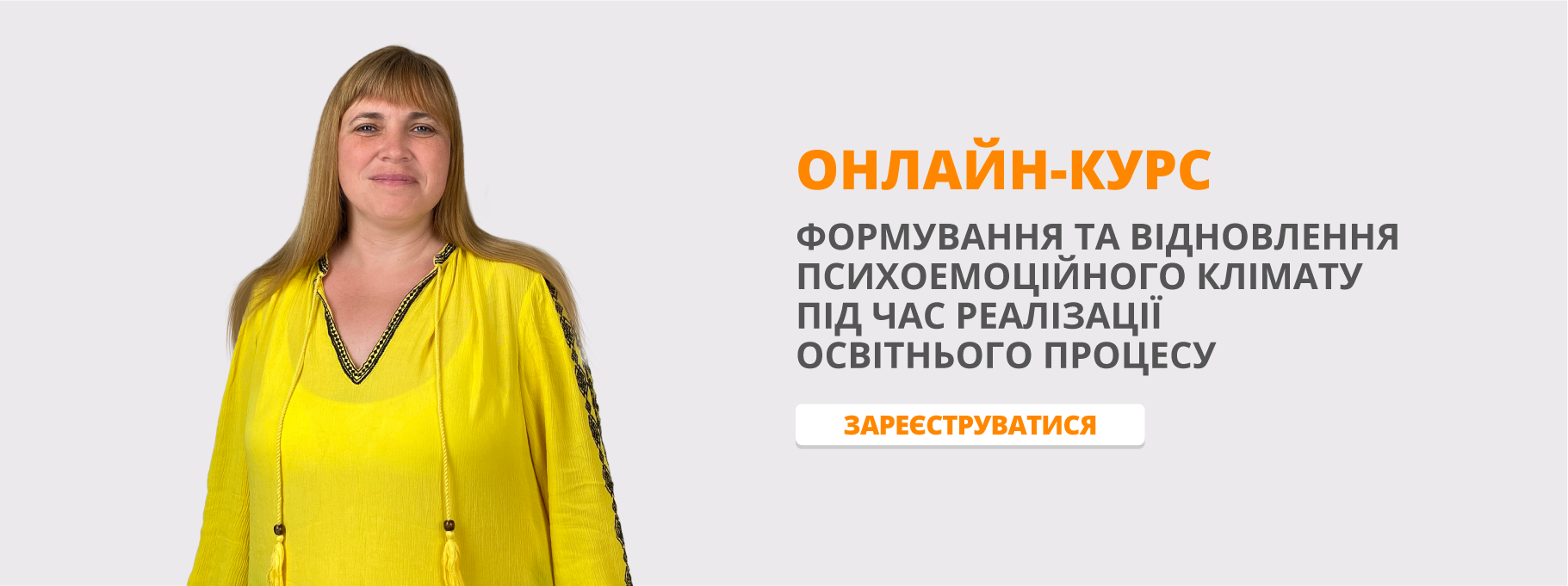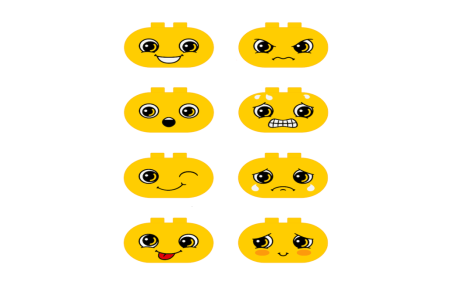Методичні рекомендації щодо використання Лего на уроках англійської мови "My Lego Gift to you"
My LEGO Gift to You

LEGO is one of the most popular and widely used toys in the world and has become an internationally recognized brand.
Fun Lego Facts
- The plural of LEGO is LEGO. It doesn’t matter if you have one or one hundred pieces of LEGO, it’s still LEGO – although many people call them LEGOs.
- LEGO comes from the Danish word leg godt. Leg godt means “play well” in Danish and LEGO is made from the first two letters of each word.
- LEGO is 87 years old. The LEGO Group began in 1932 in Billund, Denmark and was founded by Ole Kirk Christiansen.
- The company is 87 years old, but the interlocking LEGO blocks were manufactured from 1949. This makes the LEGO blocks we all know and love 70 years old.
- Ole Kirk Christiansen was a carpenter. He lost his business and began to make toys out of his leftover wood. He was inspired to construct a small wooden duck toy for his children and when they loved it, he put them into production to sell.
![]()
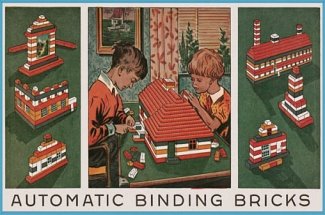
- LEGO was originally called “Automatic Binding Bricks”. LEGO were not actually the first company to market the bricks. They modified and improved the original Kiddicraft bricks to create their own.
- The LEGO Group eventually purchased the rights to the Kiddicraft block in 1981.
- In 1958, the LEGO brick with the familiar tubes inside and studs on was patented. This was done on 28 January, 1958 and all 2 x 4 LEGO bricks since then have been produced to the exact measurements of this patent.
- A LEGO brick from 1958 would interlock with a brick from 2015.The patent introduced what is called a “universal system” so that each piece is compatible with all other pieces, regardless of the year or set it belongs to.
- LEGO sued a Chinese company who made “Coko bricks” in 2002.These blocks were very similar to LEGO bricks and Coko were forced to cease production and issue a formal apology as well.
- LEGO DUPLO bricks are eight times the size of original LEGO bricks. Because of the universal system they will still connect together.
- The LEGO minifigure, also known as “minifig” or just “fig” was first introduced in 1978. The early figures before this, in 1975, had no facial features, gender, arms, or moveable legs.
- Each LEGO minifigure is exactly four bricks high without a hat.
- Since the first minifigure in 1978 more than 4 billion have been made. This makes LEGO them the world’s largest population group (if they were alive)!
- As of 2013, over 560 billion LEGO parts have been produced. On average, that is 86 LEGO bricks for every single person on the earth.
- LEGO is the world’s largest producer of rubber wheels. They produce more than Bridgestone, Goodyear and all other car tyre manufacturers.
- The tallest LEGO tower was 94 feet high and used 465,000 bricks.The tower was a pirate ship mast with a “treasure” made of gold, yellow and clear bricks on top and was built at LEGOLAND in California.
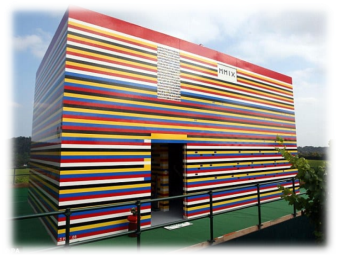 A life size house made from 3.3 million LEGO bricks.
A life size house made from 3.3 million LEGO bricks.
- In 2009, British TV presenter James May built a life size house out of LEGO. It used 3.3 million bricks and it included a working toilet, a shower and a bed – which was very uncomfortable.
- 18 out of every million LEGO pieces fail to meet the company standard. This is because the factory process is so streamlined and efficient.
- If you laid all of the LEGO bricks sold in 2012 end-to-end, they would stretch around the world more than 18 times.
- Seven LEGO sets are sold every second. By the time you have read this fact, dozens of LEGO sets have been sold around the world.
- You could reach the moon with a column of around 40 billion LEGO bricks. The column would be over 384,400 km tall.
- There are actually enough LEGO bricks to stack from the Earth to the moon – ten times.
- Six eight-stud LEGO bricks can be combined in over 915 million different ways. Two bricks can be combined 24 different ways, and three bricks 1,060 ways.
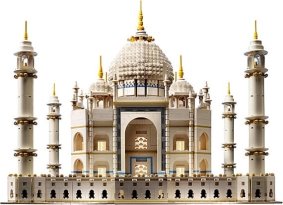
The Taj Mahal LEGO Set LEGO Group
- The largest commercial LEGO set is the Taj Mahal set. It has 5,922 individual pieces.
- There are no LEGO sets with a war or military theme. This is because LEGO creator Ole Kirk Christiansen didn’t want to make war seem appealing to children.
- In 2011, astronauts took LEGO to space. It was caused the “LEGO Bricks in Space” program and 13 LEGO sets were taken to the International Space Station to see how they react in microgravity.
- In 2000, LEGO was named “Toy of the Century” by the British Association of Toy Retailers. LEGO beat both the common teddy bear and the Barbie doll.
- In 2014, the LEGO Group became the world’s largest toy company. They are now larger than Mattel.
Lego is an incredibly creative toy!!! Bring LEGO Bricks into any lesson, and you immediately add an element of fun, without losing any learning benefits. They are great fine motor practice, encourage creativity and role play, don’t require batteries, and don’t make noise.
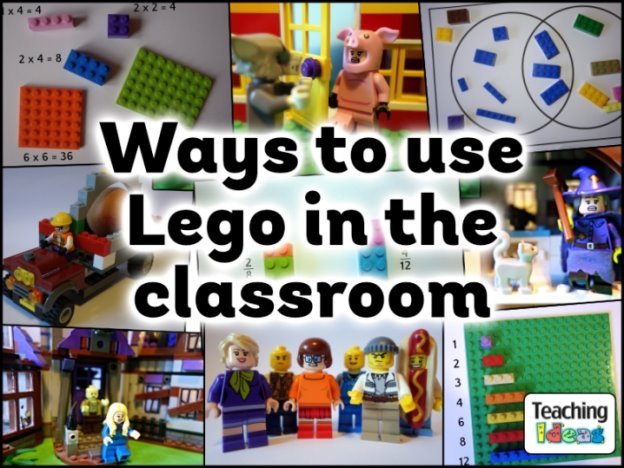
Here is a HUGE list of ways to use Lego in the classroom.
Teaching Ideas:
English
- Letter-building - Create letters of the alphabet (or words) using Lego bricks!
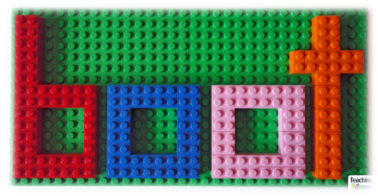
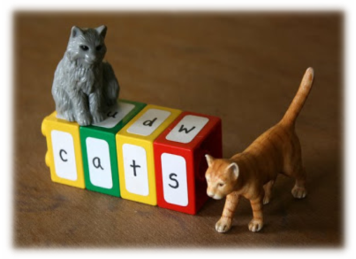
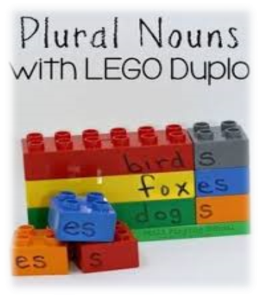
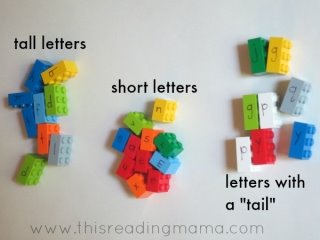
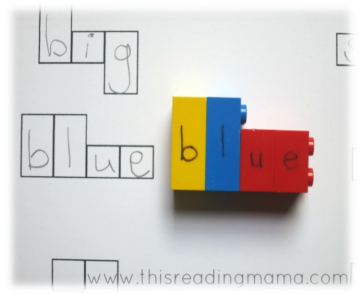
- Draw pictures in black sharpie that the kids want to colour, then they sit with the letter bricks making the words that go with each picture.
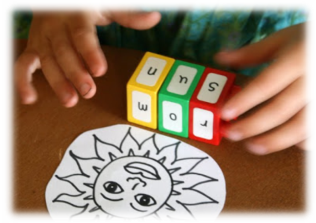
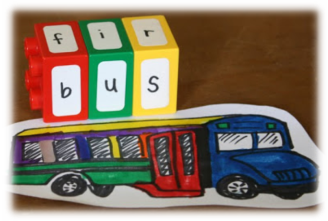
Maths
- Counting Studs - Count the studs on the top of each brick. How many are there? Which brick has the most studs? Can you sort the bricks in order of 'size', from those with the lowest number of studs to those with the highest?
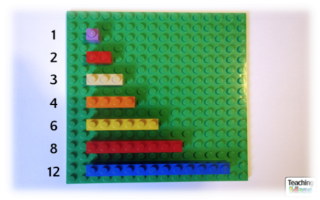
- Sorting - Use Venn and Carroll diagrams to sort a mixture of bricks into different sets (e.g. blue bricks / bricks with eight studs).
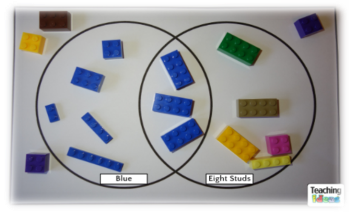
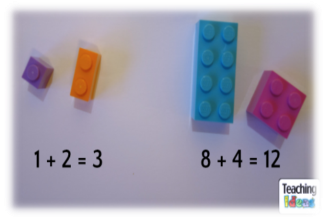
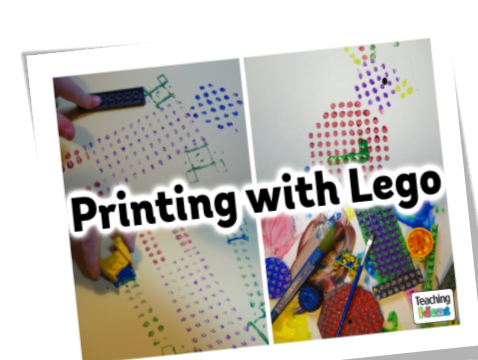
Create amazing works of art by printing with Lego bricks! The blocks have a variety of different textures which can be used in many creative ways.
The studs on the bricks can be used to create a mosaic effect...
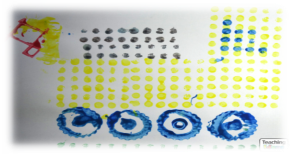
Experimenting with different kinds, shapes and sizes of bricks can create different effects too...
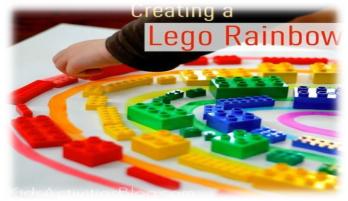
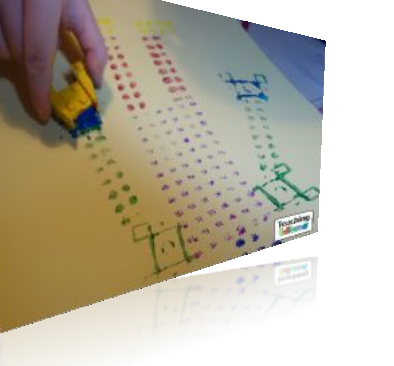
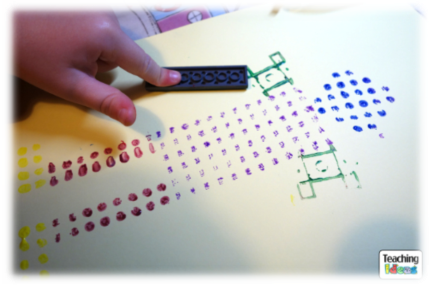
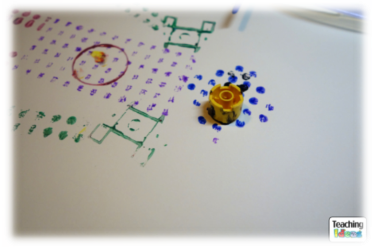
Try to make pictures of vehicles, buildings, animals and more. You could also create images that link with the current topic that your children are studying.
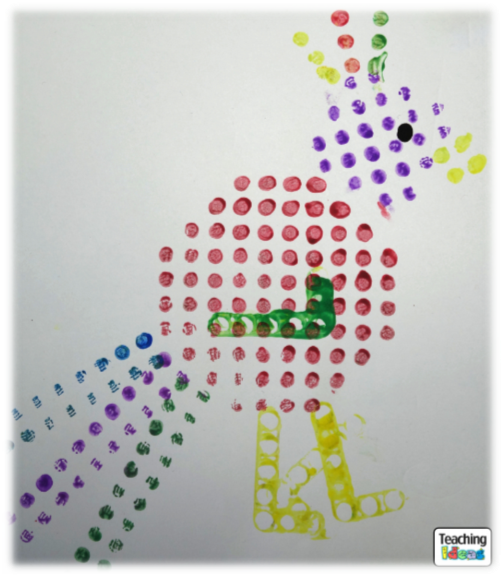
Don't forget to tidy up when you've finished!
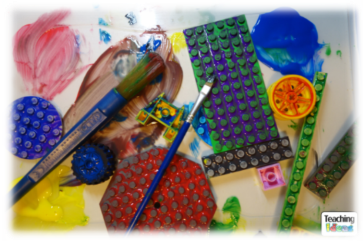
Geography
- Flags - Create a flag from a country / state and use these as part of a display area about those places.
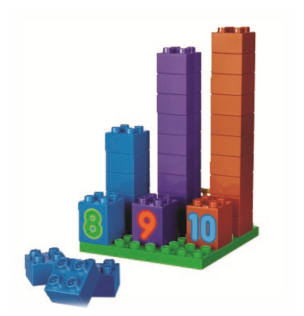
Design Technology
- Construction - Can you try to recreate local landmarks or famous buildings using Lego? Look at how the original buildings are created and use similar techniques using the Lego bricks. Lego Architecture sets could be used as a starting point for this (suggested by Erik Schwab).
- Construction Challenges - Challenge groups of children to create the highest tower or the strongest bridge using a given set of bricks. Discuss which designs are the winners and why.
- Earthquake proof buildings - Could your children design an earthquake proof building? Could you test them too? Suggested by Helen Doveston.
- Design a Home - Create a home for a minifigure. What kind of home would they like? You may ask your students to create a home using Minecraft and then get them to build it in Lego.
- Making Furniture - Use Lego bricks to design furniture!
- Play the 'Roll a Dice' game - Children play in pairs (or small groups) and take turns to roll a die. After rolling, they build a tower with that many studs. The child with the highest tower (that doesn't fall over) after a certain number of rolls wins!
- Vehicle Challenges - Design a vehicle that will safely carry an egg over a long distance. Can you have a competition with your friends to see which vehicle will travel the furthest?
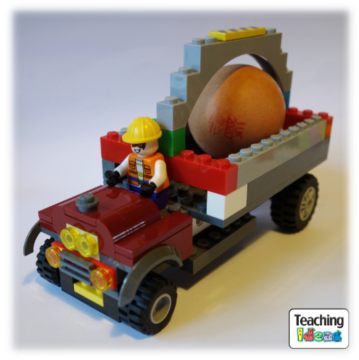
Create Your Own Minifigure

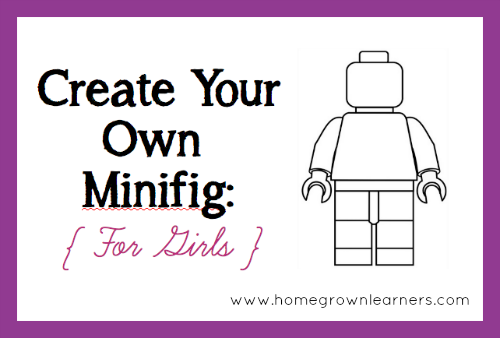
Making LEGO Landmarks
1. Stonehenge 2. The Washington Monument
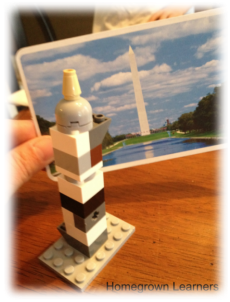
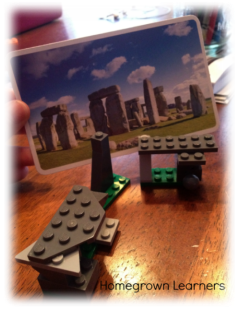
3. The Floating Shinto Shrine Gates
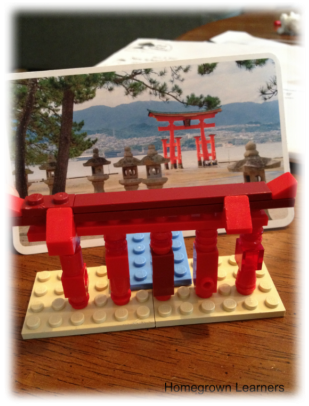
Build Me "Emotions"
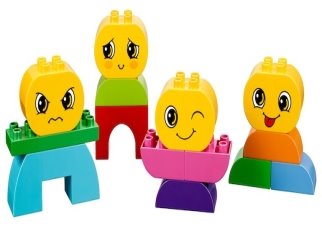
Young children’s natural instinct is to learn and grow through play. LEGO® Education Social & Emotional Development solutions inspire hands-on, intuitive explorations of emotional, collaboration, and social skills. As the young students build, create stories, and navigate situations together with colorful LEGO® DUPLO® and LEGO® bricks, they also strengthen their problem-solving abilities, empathy, and sense of self. Created for early learners, Social & Emotional Development solutions are designed to help the youngest students build critical social and emotional skills. Unique combinations of bricks engage students in recognizing and understanding feelings, emotions, expressing personal preferences, resolving conflicts in constructive ways, and learning about relationships.
Build me “Emotions “ Lesson Plan
CONNECT
Set aside the eight face bricks.
Tell the children they will use some LEGO® DUPLO bricks to play a game about emotions. Ask the children to name some different emotions.
Hold up the bricks, one at a time and encourage the children to notice the facial expression on each brick.
Point out the eye shape and mouth shape on the bricks.
Ask the children to tell about a time when they were happy. Ask them to show how their faces look when they are happy.
Explain that different words are used to describe emotions and that these words may have similar meanings, but are still a little bit different.
-
The words: angry, grumpy, and annoyed could be used to describe the expression on the circled brick shown in the sidebar.
Discuss the differences and similarities between feeling angry, grumpy, and annoyed. Give the children other examples such as happy, cheerful, and joyful. - Play a game with the children. Ask one child to secretly choose a face brick and to not show the brick to anyone else.
- Ask the child to show the same emotion on his or her own face.
-
Ask the other children to guess which emotion is being shown.
Continue playing this game until the children are able to rapidly identify the different facial expressions. They can give multiple responses for the same brick as long as they make sense.
Consider asking questions like:
- What emotion do you see on this face?
- How can you tell that this face is happy /sad?
CONSTRUCT
Tell the children to work with a building buddy to build a character using a face brick.
CONTEMPLATE
Tell the children that when you understand how someone is feeling, you can respond in a way that makes sense. Discuss the appropriate ways to respond to different emotions. Explain that what works well in one situation may not work the same way in a different situation.
Example: When someone is feeling sad, you may be able to cheer them up with a silly joke. However, in a different situation, the person may need some time and space to feel the sadness.
Discuss that looking at body language is also a way to understand how someone is feeling. Use your own body language to show the children different emotions and ask them to identify the emotions.
Consider asking questions like:
- Why is it important to recognize different emotions?
- What are some other ways you can tell how someone is feeling besides by the way his or her face looks?
CONTINUE
Tell the children to work with their building buddies to change their characters so that they show their emotions with body language.
When they have finished building, ask the children to take turns showing their models and allowing the other children to call out the emotion the figure is expressing.
DID YOU NOTICE?
Observing the following skills can help you monitor whether the children are developing socially and emotionally.
- Children are able to recognize and name emotions.
- Children are able to understand other people’s feelings.
With LEGO for early learning, students:
- Form social and emotional skills though self-regulation, group play, and idea sharing
- Develop problem-solving skills through play-based scenarios
- Explore how things work through physical interactions and storytelling
- Investigate the world around them, developing critical social and computational skills as they sort, classify, build, examine, and share their creations
Develop an understanding of how parts work together to create a whole
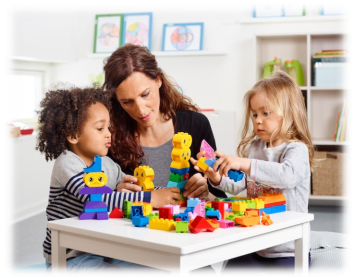
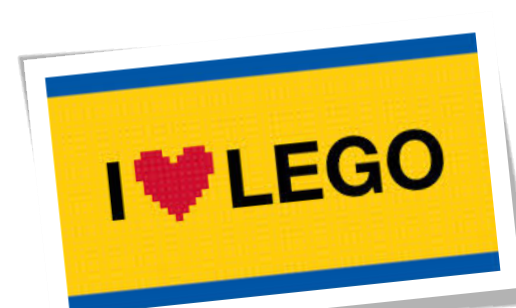
AND YOU?


про публікацію авторської розробки
Додати розробку
